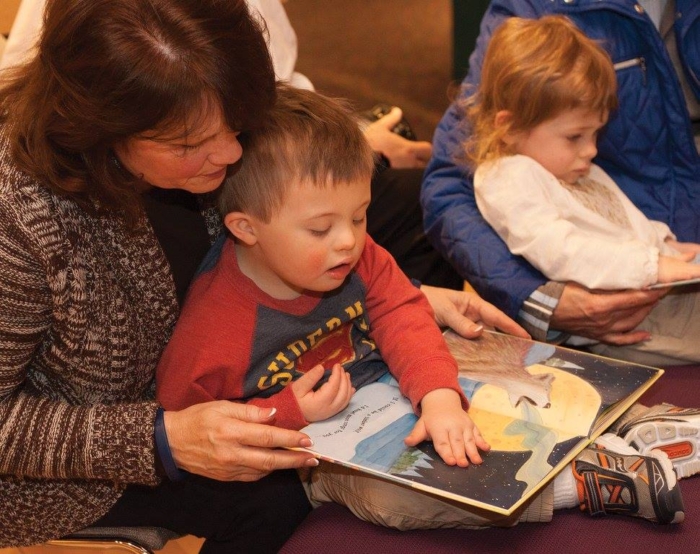
Why use Braille?
Technological developments are bringing more and more assistance to those who are blind or have visual impairment. A standard iPhone ships with the VoiceOver screen reader app, allowing users to have information read to them. Speech synthesizers, once infamous for their robotic and sometimes difficult-to-understand timbre, have become more and more naturalistic.
And the cost of many assistive technology devices continues to come down and become more available to people of every economic means.
Some observers have noticed children who are visually impaired have come to rely on these advancements to the extent they are not learning Braille in the same numbers and at the same level of proficiency as they used to. A few are even beginning to question whether Braille will continue to have a place in everyday life and in professional endeavors.
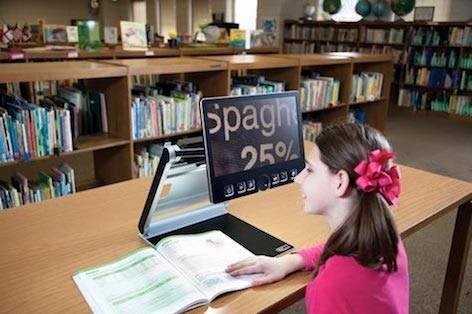
Experts we spoke to, though, see a bright future for Braille. They believe the tactile reading and writing system is key to literacy and independence for those who are blind or are visually impaired.
Indeed, they see assistive technologies as going hand-in-hand with Braille rather than replacing it.
Braille = literacy
“Braille is more relevant now than ever. Literacy plays an increasingly important role in the ‘information age’ in which we live. The ability to independently read and write is the key to freedom, literacy and a fulfilling life of independence. There is no other way to achieve these simple goals without Braille,” said Larry Skutchan, director of technology product research for the American Printing House for the Blind (APH), the world’s largest nonprofit organization creating educational, workplace and independent living products and services for people who are visually impaired.
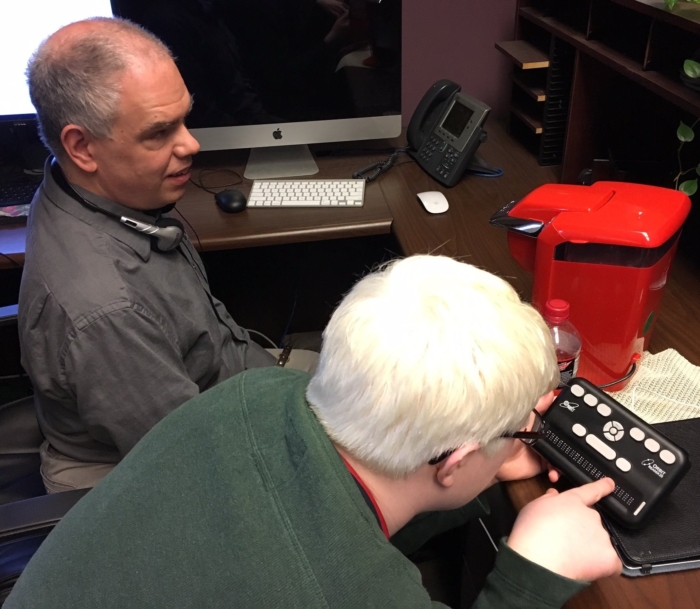
New assistive technologies like VoiceOver have dramatically increased the amount of material people who are visually impaired can consume.
“But with a speech synthesizer, they are not reading, they are listening. Listening restricts the benefits of literacy by skipping important components like spelling, punctuation, formatting and emphasis,” Skutchan said. “Braille represents dignity, privacy and independence. If you can’t read or write for yourself, you are condemned to a life of dependence on others.”
He notes Apple, Amazon, Google and Microsoft all support refreshable Braille displays for mobile devices along with screen readers. So users can switch between text-to-talk and tactile reading on the fly. Apple even includes a Braille input method so people can type Braille directly into any text box without having to use the onscreen keyboard.
APH offers their own Visual Brailler app, which helps users learn and use Braille. It’s available for free download in the Apple App Store.
Despite talk of assistive technologies replacing Braille, APH has actually seen an increase in Braille production of textbooks, Skutchan said. He notes Braille is still the only way to present the written word to a person who is blind or has visual impairment in the same way it is presented to a sighted person.
What Braille can do
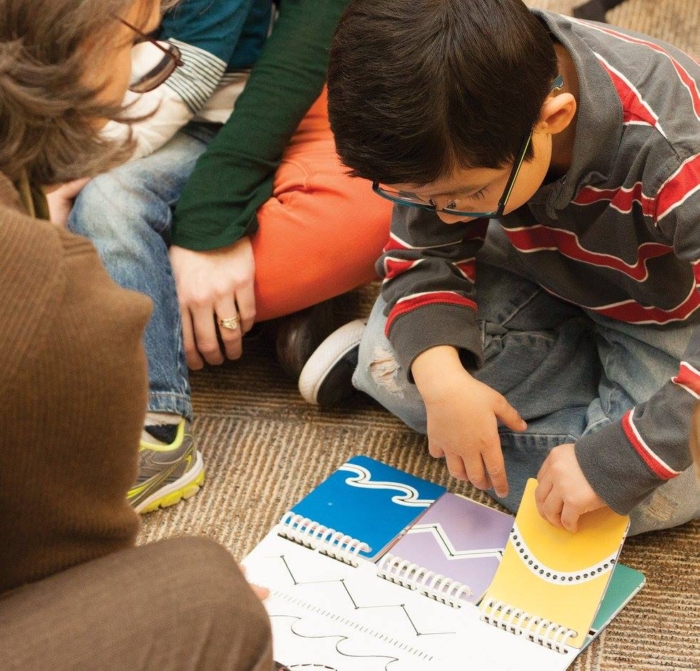
“Braille is the only practical method of presenting the written word to a person who is blind,” he said, adding Braille still offers the following advantages that most text-to-type technologies do not:
- Gaining literacy through spelling, punctuation and formatting rules
- Labeling
- Finding a room number or name
- Finding the buttons to push and the floor to exit in elevators
- Communicating privately
- Reading in a noisy environment
- Using tactile graphics to gain an understanding of a concept
- Solving long or complicated math expressions
- Writing and reading without power or equipment
Rather than exploring alternatives to Braille, APH is focusing on ways to make reading better sync with technological advancements and find ways to lower the cost of producing and consuming embossed and electronic Braille, plus tactile graphics for high-quality textbooks.
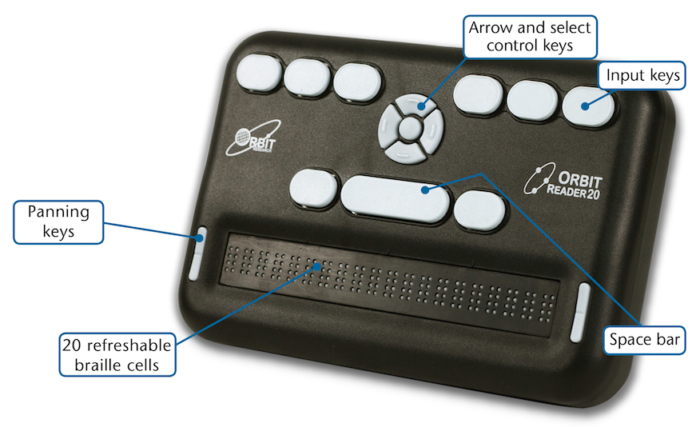
Among APH’s major initiatives are BrailleBlaster, a free professional transcription system for producing textbooks with automated formatting that meets the guidelines of the Braille Authority of North American (BANA); Orbit Reader 20, an affordable reading and writing tool that works independently or when connected to a computer or portable device like a tablet or phone; and Graphiti, a refreshable tactile graphics display, which dynamically represents graphical content through an array of pins that raise and lower to several different heights.
Part of the challenge the visually-impaired community faces is low expectations from many sighted people, who often have difficulty imagining a person with visual impairment holding a competitive job, traveling on public transit or living an independent lifestyle, Skutchan said. The combination of assistive technology and Braille literacy is a powerful tool to allow those with visual impairment to challenge these expectations.
Flexibility and independence
James Durst, superintendent for the Indiana School for the Blind & Visually Impaired, is a living example of this. He reads books and other materials on several electronic reading devices, and he also uses mobile phone apps, audio books, desktop PC-based technology and smart devices in his home.
“Yet I still access print every day at home, at work and at play. I find print is more efficient in some situations, and I enjoy using it,” he said.
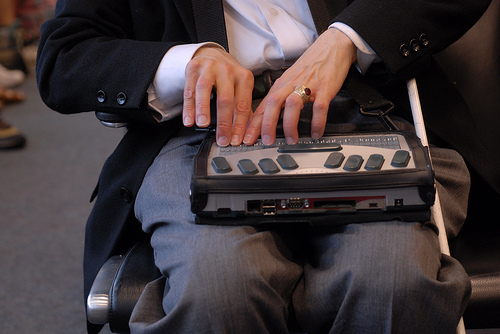 The school stresses the importance of tactile reading/writing to all of its K-12 students. Every one of the school’s teachers is proficient in Braille and is certified to teach Braille methodology.
The school stresses the importance of tactile reading/writing to all of its K-12 students. Every one of the school’s teachers is proficient in Braille and is certified to teach Braille methodology.
“Braille and Braille literacy are vital to our students. We work hard to ensure Braille literacy does not ‘drop’ and make it a goal for our school-age students to leave school equipped with the skills to experience success in all aspects of their personal and professional lives,” Durst said.
The Hoosier State takes Braille literacy very seriously, Durst said, noting the Indiana Department of Education funds education efforts for students who are blind or visually impaired, including a statewide resource center using Braille instructional materials; university programs that train and license teachers who serve the visually-impaired community; and ongoing training and services to teachers.
 Durst said it’s apparent the newest generation of students is making more use of assistive technologies than ever before. But they see those as augmentative, rather than replacement, skills.
Durst said it’s apparent the newest generation of students is making more use of assistive technologies than ever before. But they see those as augmentative, rather than replacement, skills.
“It is important we provide the fundamentals and mastery of reading and writing from an early age on, just as we do for our students who are sighted learners,” he said.
“We attempt to have students access and utilize technology whenever and wherever possible moving from low-tech to high-tech devices. One size does not fit all.”
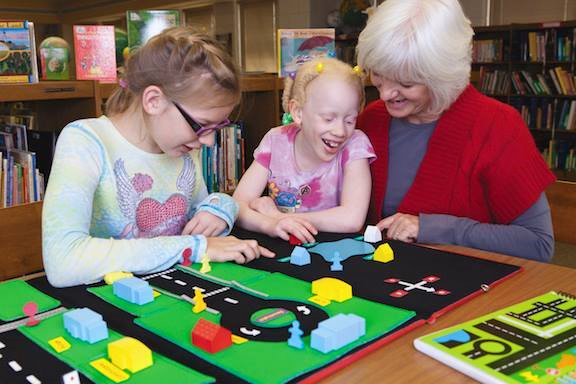
Braille is here to stay
Simply put, Durst said, “Braille is not going away.”
“I see access to Braille and Braille technology becoming more sophisticated and mainstreamed and more affordable,” he said.
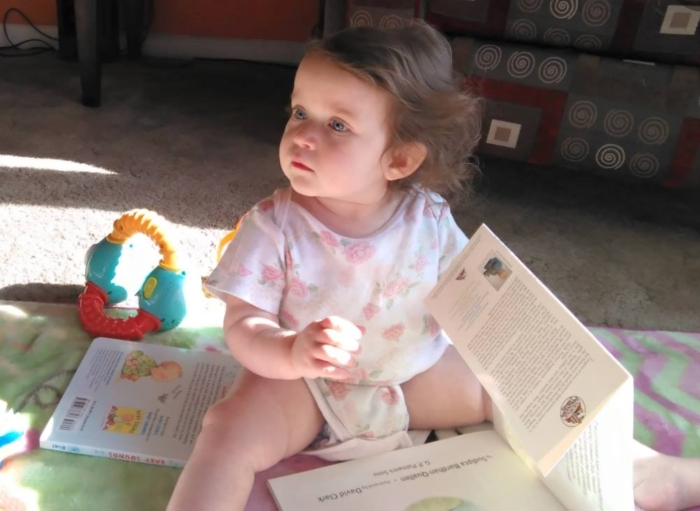
“We are on the cusp of experiencing emerging technological breakthroughs in tactile graphic displays and full-page Braille displays that will open up new possibilities for our students who read and access Braille. Our teachers will have access to advances in Braille technology and software that will allow them to transcribe and produce quality Braille more efficiently and timely for their students. This allows for more tangential and incidental learning that may not have been possible before the advancements in technology and electronic access.
“Our young Braille readers today will be our future leaders to move us into the next era of Braille use and technology.”
